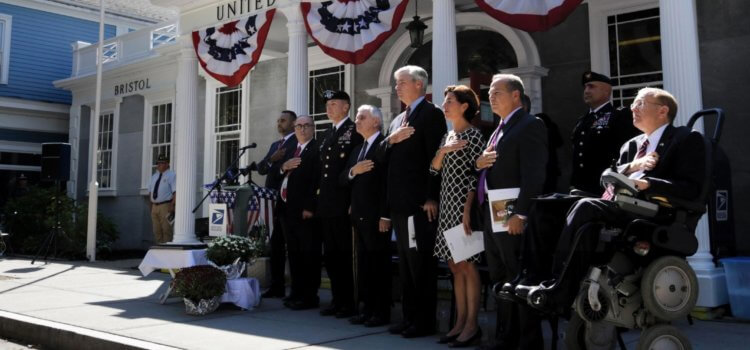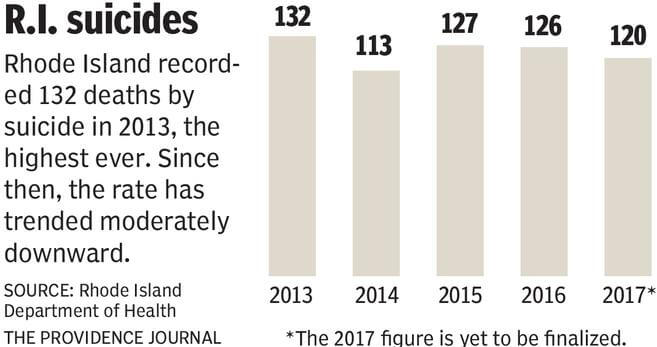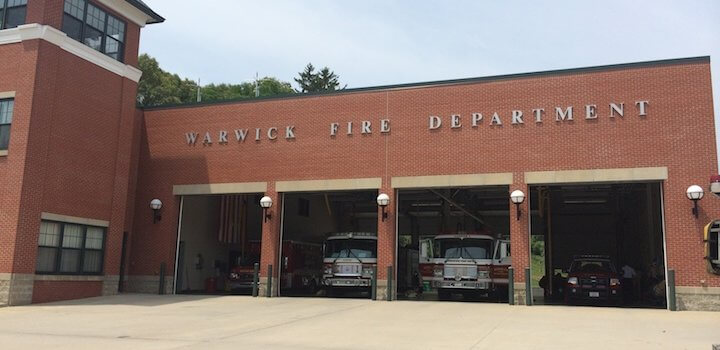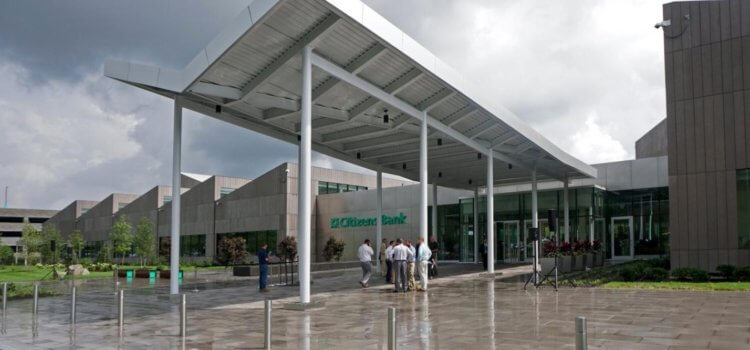By Mary Johnson
The reason for the change?
“Low dollar items go overseas,” said Caito, “complex items stay here in the U.S.”
Caito said the company combines “both advanced and traditional materials in unique ways.” The facility includes rows of sewing machines and workstations where employees cut patterns and fabric to make riot gear and other protective gear. It’s bright, clean and organized, but appears low-tech, although it is actually quite advanced. Caito said the company incorporates fabric, foams, plastics, leather and Kevlar, among other materials, to make the protective gear to withstand impact, slash or stabs, because they haven’t found a wonder material that does it all yet. He said the team is always thinking about ways to make the gear lighter, more durable, and better able to withstand attack, and they spend a significant amount of time doing research to stay on top of current trends, materials and fabrics.
Amerisewn was one of ten companies exhibiting their work at the Rhode Island Textile Innovation Network launch last week at the Historic Slater Mill in Pawtucket. RITIN, as it’s known, was formed by Senator Sheldon Whitehouse and the University of Rhode Island Business Engagement Center to foster collaboration among textile companies, designers and university faculty from URI, RISD and Brown. At the event, Senator Jack Reed spoke of uniforms and gear being developed and tested for the military that includes nanotechnology and electronic circuitry. “The uniform I wore in 1967 and 1970 as a paratrooper and cadet doesn’t cut it,” said Reed. “It’s not your granddad’s textiles any longer.”
Michael Woody, the CEO of Trans-Tex, LLC and the President of RITIN, is a man on a mission to “change the hearts and minds” of Rhode Islanders about textile industry. “It’s no longer the dark and dirty factory full of dangerous equipment that they see in the history books,” he said.
Smart fabrics
“Some advanced textiles” he added, “are apparel made of smart fabrics that monitor blood pressure or heart rate.” Rhode Island companies, he added, also make goods that are not widely recognized as textiles, because they are not clothing or apparel, such as “fabrics for structures, the automotive industry and the marine industry; fabrics for medical devices, and fuel storage.”
The Cooley Group, headquartered in Pawtucket with a facility in Cranston, is one such company. “Cooley textile products are very different from the textiles people typically associate with clothing and fabrics,” said Dan Dwight, The Cooley Group’s CEO. Cooley textiles are “coated with polymer or other chemistry formulas to serve a specific market application” said Dwight.
For instance, the company makes a textile coated with “a proprietary urethane-based chemistry formula that is fabricated into combat raiding craft for the U.S. Military Special Forces,” according to Dwight. Once fabricated from the Cooley “rolled goods,” the craft can be carried in a backpack and inflated and deflated as needed, making the forces more mobile and less likely to be discovered during military operations.
Cooley also makes a product that, sadly, hasn’t yet caught on in Rhode Island. It’s a membrane that is injected into the pipes under the road to create a barrier inside, allowing “municipalities to re-line old and leak water and sewage pipes without having to dig up streets.” Dwight said application of the “cost effective and environmentally sustainable technology is much more prevalent in Europe than in North America.”
Innovation vouchers
Both Amerisewn and the Cooley Group, along with six other Rhode Island textile companies, receive Innovation Vouchers from the Rhode Island Commerce Corporation to support research and development. This funding allows the companies to partner with university professors and students to explore innovative ideas for new materials or processes.
The Cooley Group has partnered with faculty at URI to explore technology to bring billboards into the modern age with sensors and other tools to collect and distribute information. “The Innovation Voucher work Cooley is doing with URI facility and students has given Cooley access to additional technical resources to support our global growth through new products,” said Dwight.
At the event last week, hosted by RITIN in partnership with the Rhode Island Congressional Delegation [including Congressman Jim Langevin], Real Jobs RI, the Rhode Island Commerce Corporation, Polaris MEP, the Rhode Island Manufacturing Association, the URI Business Engagement Center and the Slater Mill Museum, staff from Cooley Group, Amerisewn, and eight other companies exhibited the products their goods are part of, while more than 100 people, manufacturers, university faculty, students, and government officials, talked shop.
“We are constantly developing new products for new end use categories and networking with other companies to maximize our capabilities. That’s the key to our success,” said Steve Perry, Senior Vice President of Darlington Fabrics, which makes high performance fabric for NFL teams and NASA Astronauts. “RITIN is a very important organization to Darlington because it facilitates collaboration between the diverse group of textile companies in our state.”
Vibrant industry
During the past year, RITIN has leveraged funding from the RI Commerce Corporation and the Department of Labor and Training to host networking events like these, collaborate with Polaris MEP to host a Design Week panel, and host an exhibit at the Providence Mini Maker Faire help promote the modern textiles sector to the general public through a new website and ongoing social media campaign. “Rhode Island has a vibrant textile industry,” said Whitehouse, who founded RITIN with the University of Rhode Island Business Engagement Center, “I hope RITIN will take stars and make sure they form into a constellation.
The organization also conducted a survey of textile companies to better understand industry needs, uncovering an urgent need to attract younger employees into an industry that will lose a significant portion of its workforce in the next decade.
“Textile companies provide a solid career paths for those with college degrees and those who chose to enter the workforce immediately after high school,” said Christian Cowan, Center Director of Polaris MEP, which provides day-to-day management for RITIN and is an affiliate of the NIST Manufacturing Extension Partnership (NIST MEP). According to NIST data, the state employees approximately 2,500 people in the textile sector and the average earnings was above the national average, at $52,404 annually.
Caito, who graduated from a vocational high school with a degree in cabinet making, said, “It’s important in manufacturing to try to get better every day and never stop learning. Manufacturing is a team and everyone’s job is important for that team. If kids new how many types of industries and interesting opportunities there were using textiles they would be amazed.”
RITIN’s website, at www.ritin.org, created by Walsh and Associates of East Greenwich, features video profiles of three Rhode Island textile employees that Woody said represent the diverse range of job opportunities available for individuals of varying education levels:
Anjali Khemani, an Associate for Design and Innovation at Pawtucket, RI-based Propel, LLC, recently earned a Master’s degree in textiles from Drexel University and moved to Providence because of the innovation underway in the local textile industry. “My focus at Propel is computer programming,” said Khemani. “There are so many textile companies that are looking for people that can write code and develop programs. Our industry has switched from the dull and dusty of years past to advanced technologies and customized solutions.”
Tom Jeronimo, the Director of Color Management at Kenyon Industries in Kenyon, shares his journey of being an auto mechanic before beginning his manufacturing career in an entry-level production job 20 years ago. “I had a passion for fixing cars but several friends were in the textile industry and encouraged me to join them,” said Jeronimo. “It’s a decision I’ve never regretted. Many of my friends and family members had a totally outdated perception of what textile manufacturing is like. I tell them they would be amazed at how clean our plant is. Things have changed in the past 20 years. The career avenues in textiles today are pretty much limitless.”













